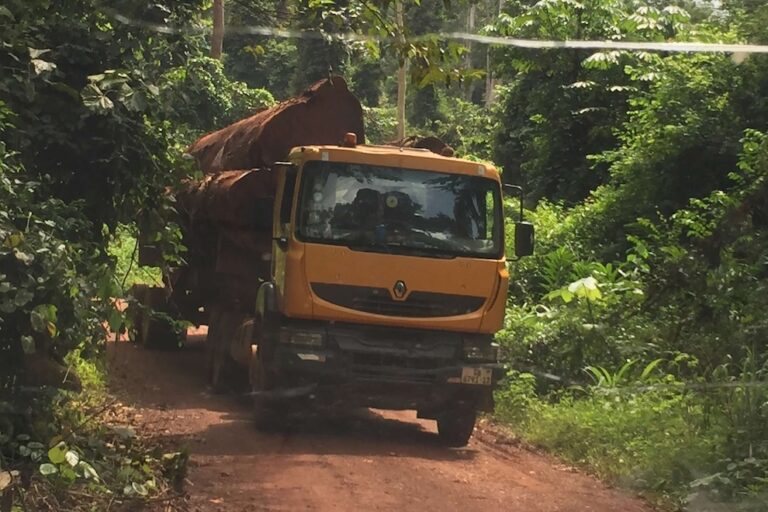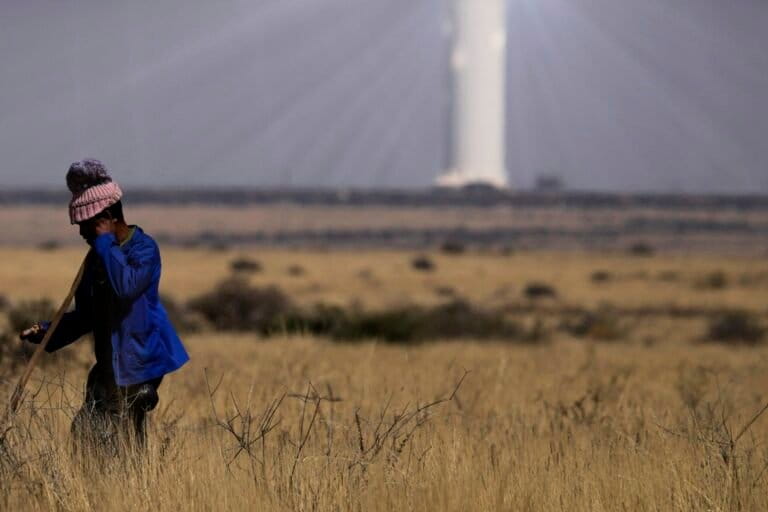- Nitrogen fertilizers are applied to crops to increase yield, but some of that nitrogen is lost to the atmosphere in the form of ammonia. Ammonia is a major air pollutant linked to numerous health issues, including asthma, lung cancer and cardiovascular disease.
- Using published agricultural and environmental data, researchers employed machine learning to quantify global ammonia emissions from rice, wheat and corn cultivation at 10-kilometer resolution. This added up to a global estimate of 4.3 billion kilograms (9.5 billion pounds) of ammonia emitted from the three staple crops in 2018.
- The model also revealed that optimizing fertilizer management to suit local conditions could achieve a 38% reduction in global ammonia emissions from the three crops. Optimal fertilizer management and the associated emissions reductions depended on local climate and soil characteristics.
- The model, which utilized machine learning, found that under current fertilizer management practices, climate change will increase ammonia emissions from rice, wheat and corn by up to 15.8% by 2100. But this increase could be entirely offset by optimizing fertilizer management and adapting it to local conditions.
More effective management of nitrogen fertilizers could reduce emissions of a harmful air pollutant from the cultivation of three staple crops by up to 38%, according to a study published in the journal Nature and conducted by an international team of scientists led by Yi Zheng from China’s Southern University of Science and Technology.
A model using a type of artificial intelligence known as machine learning helped researchers untangle the complex relationship between environment, climate and agricultural practices to generate the most detailed map to date of global ammonia emissions from rice, wheat and corn.
Ammonia is a major air pollutant that drives the formation of smog, which is linked to a variety of health issues, including asthma, lung cancer and cardiovascular disease. Nitrogen fertilizers are applied to crops to increase yield, but some of that nitrogen is lost to the atmosphere in the form of ammonia. Globally, crop cultivation is responsible for around 50-60% of human-caused ammonia emissions.

The amount of ammonia emitted from cropland depends on two factors: how much nitrogen is applied and what proportion of that nitrogen is lost to the atmosphere as ammonia — a metric known as the ammonia emission factor. Emission factors are determined by a variety of things, including crop type, soil characteristics and local climate.
Fertilizer management practices can cut ammonia pollution in several ways. For example, enhanced-efficiency fertilizers slowly release nutrients into the soil, maximizing nitrogen uptake by plants and minimizing losses to the environment. Placing fertilizers deep into the soil, rather than spraying them on the surface, can also reduce emissions.
Machine learning disentangles ammonia emissions
Nations’ efforts to reduce ammonia pollution impacts have been hampered by a lack of high-resolution data measuring the combined effects of natural and human factors on ammonia emissions. But untangling these complex relationships to determine local-scale ammonia emission factors has proved extremely challenging.
The researchers began by using published data on ammonia emissions, environmental characteristics and management practices for agricultural fields worldwide to generate a data set of 2,775 samples covering every continent except Antarctica. This is the most comprehensive open data set of field experiments on ammonia emissions from global croplands published to date.
The team then used this data set to train a machine learning model to quantify ammonia emission factors at extremely high resolution based on local climate, soil characteristics, crop type and irrigation, along with land and fertilizer management practices. The model was able to predict the ammonia emission factor for any given 10-kilometer square of land with an accuracy of around 80%.
Summing up these local emissions factors across the globe generated a total estimate of 4.3 billion kilograms (9.5 billion pounds) of ammonia emitted from rice, wheat and corn in 2018. This is significantly lower than previous estimates, a variance the authors attribute to their model’s more comprehensive consideration of the effects of differing fertilizer management practices.

Using machine learning, the researchers were able to “overcome the limitations of existing calculation methods,” says Zheng. This allowed the scientists to “accurately characterize the complex relationship between agricultural ammonia emissions and various natural and human influences,” he explains.
Abderrachid Hamrani, a machine learning expert at Florida International University who was not involved in the research, describes the work as “innovative and comprehensive.” The machine learning approach used by the researchers “surpasses traditional statistical approaches by integrating a wide range of variables and providing spatially explicit insights at a global scale,” he says.
Tailored fertilizer solutions yield large emissions reductions
Next, the researchers utilized the model to investigate the potential for a variety of fertilizer management practices to reduce ammonia emissions from cropland. They found that optimizing fertilizer management to suit local conditions could achieve a 38% reduction in global ammonia emissions from the three staple crops.
The optimal fertilizer management solutions, and how much those solutions could reduce emissions, depended heavily on local climate and soil characteristics.

“Using enhanced-efficiency fertilizers and applying fertilizer deep in the soil are the most effective mitigation measures, but they are not a one-size-fits-all solution,” explains Zheng. The model demonstrated, for example, that 83% of rice cropland globally could benefit from using enhanced-efficiency fertilizers, whereas 61% of wheat cropland and 50% of corn cropland could reduce emissions using this approach.
Nitrogen inputs to cropland — in the form of manure and synthetic fertilizers — are projected to increase by 46% from 2010-50 to meet the food demands of a growing global population. So, without alternative agricultural practices, cropland ammonia emissions will inevitably rise too.
Incorporating future climate scenarios into the model, the researchers predicted that under current fertilizer management practices, climate change will increase ammonia emissions from rice, wheat and corn by up to 15.8% by 2100. But this increase could be entirely offset by optimizing fertilizer management.

Wim de Vries, an environmental systems analyst at Wageningen University & Research in the Netherlands, who was not involved in the work, says that “it is common knowledge that ammonia emissions are affected by [fertilizer] application techniques, climate and soil properties.” However, he praises the study for producing a robust, crop-specific quantification of ammonia emissions, data that he says are interesting and useful for the scientific community.
“This study’s application of machine learning to environmental science … represents a significant advance,” as well, says Hamrani. It “addresses the crucial need for fine-resolution global ammonia emission factors accounting for crop types, local environmental and agronomic factors,” he explains.
Local solutions pave way for global emission reductions
Reducing ammonia emissions without jeopardizing food security will be key to avoiding serious harm to ecosystems and human health in the decades ahead. Zheng says he believes the team’s findings can “guide countries worldwide to adopt region-specific policies and management measures, motivating and educating farmers to optimize fertilizer management according to local conditions,” which could help reduce air pollution and improve food security.
The study results provide “actionable insights for policymakers and stakeholders in agriculture and environmental management,” Hamrani agrees.
However, de Vries notes that the ammonia emissions quantified in this study represent only a small part of a far bigger picture. “The overall contribution of ammonia emissions from wheat, corn and rice to global ammonia emissions due to fertilizer application is limited,” he explains. These three crops represent only about 50% of the total nitrogen applied to cropland worldwide. Livestock management, biomass burning and fossil fuel combustion are also major sources of atmospheric ammonia emissions.

The study not only provides valuable data for agricultural researchers, policymakers and farmers, it also demonstrates machine learning’s utility for revealing new insights into complex interactions between human activities and the environment.
“Artificial intelligence can uncover patterns that traditional methods may overlook,” Zheng says. The study also shows “the immense potential of big data and artificial intelligence in supporting sustainable development goals.”
Banner image: A farmer shows an unpeeled corn. Image by Frank Meriño via Pexels (Public domain).
Agricultural nitrogen pollution is global threat, but circular solutions await
Citations:
Xu, P., Li, G., Zheng, Y., Fung, J. C., Chen, A., Zeng, Z., … Houlton, B. Z. (2024). Fertilizer management for global ammonia emission reduction. Nature. doi:10.1038/s41586-024-07020-z
Bodirsky, B. L., Popp, A., Lotze-Campen, H., Dietrich, J. P., Rolinski, S., Weindl, I., … Stevanovic, M. (2014). Reactive nitrogen requirements to feed the world in 2050 and potential to mitigate nitrogen pollution. Nature Communications, 5(1). doi:10.1038/ncomms4858
FEEDBACK: Use this form to send a message to the author of this post. If you want to post a public comment, you can do that at the bottom of the page.














